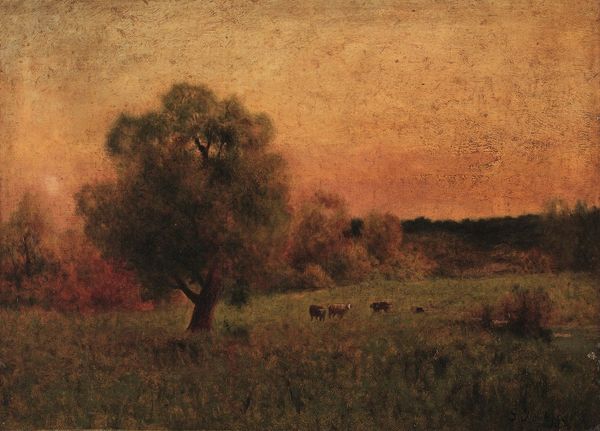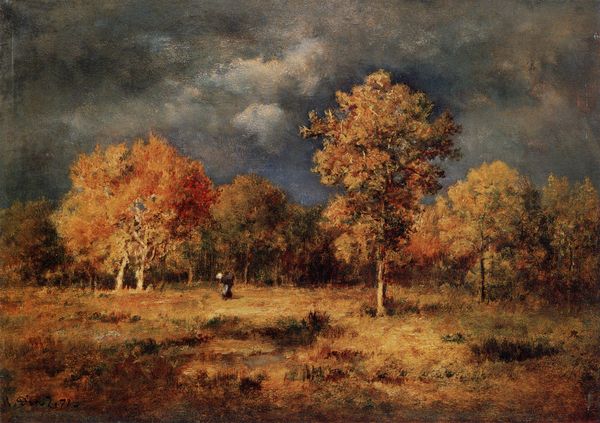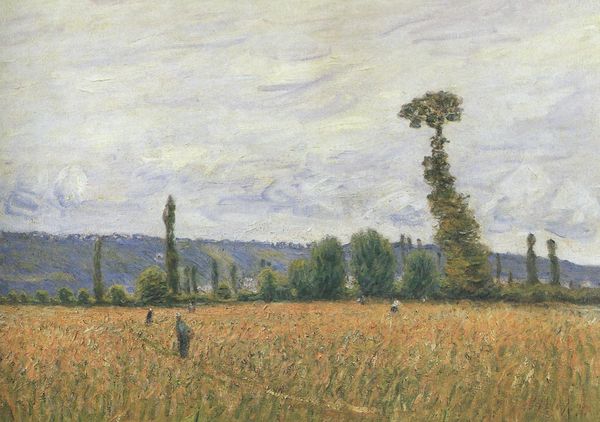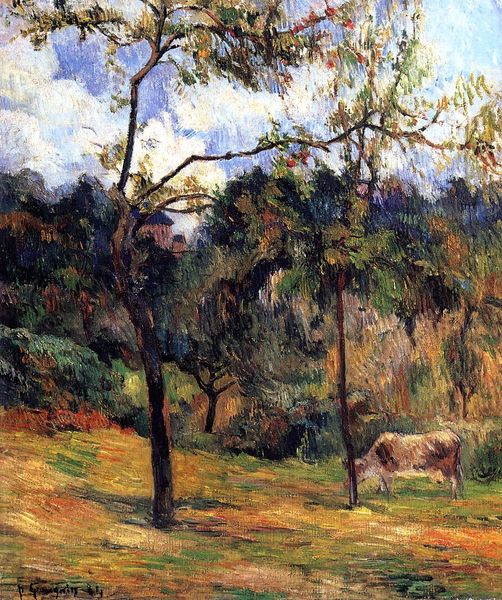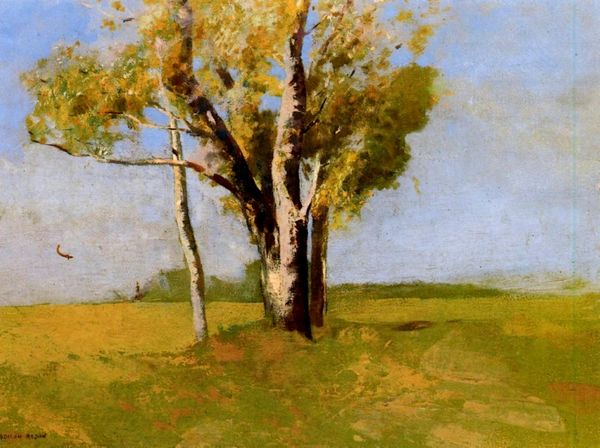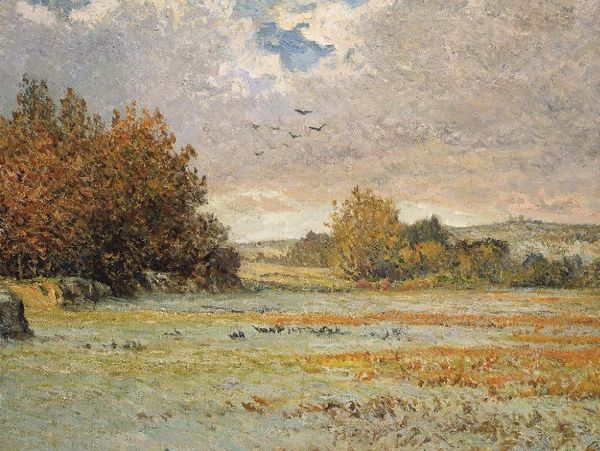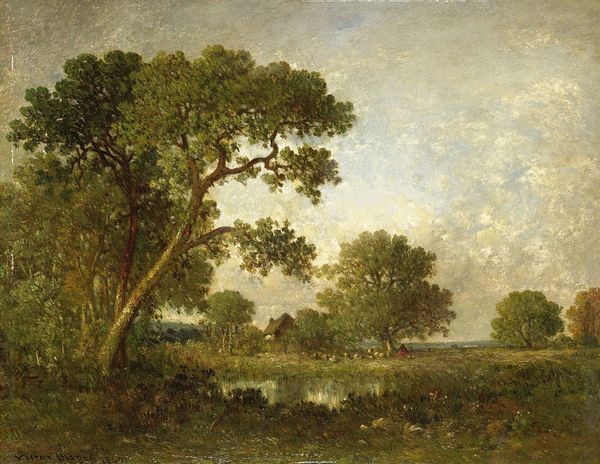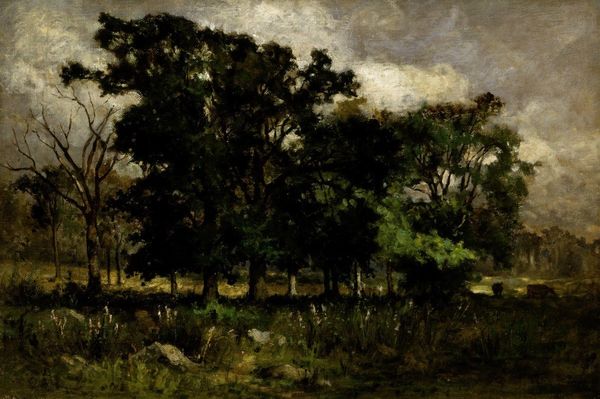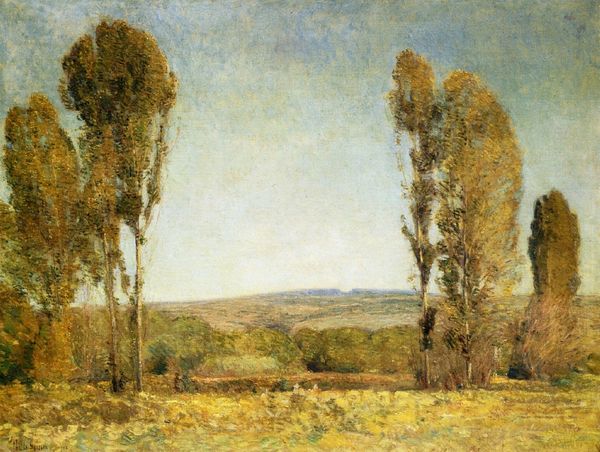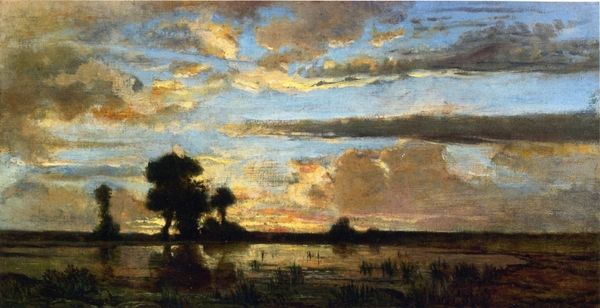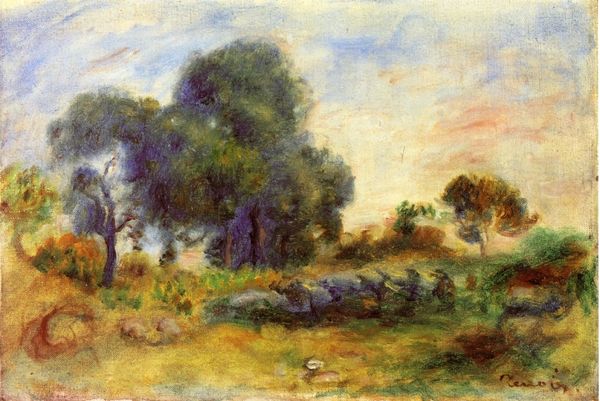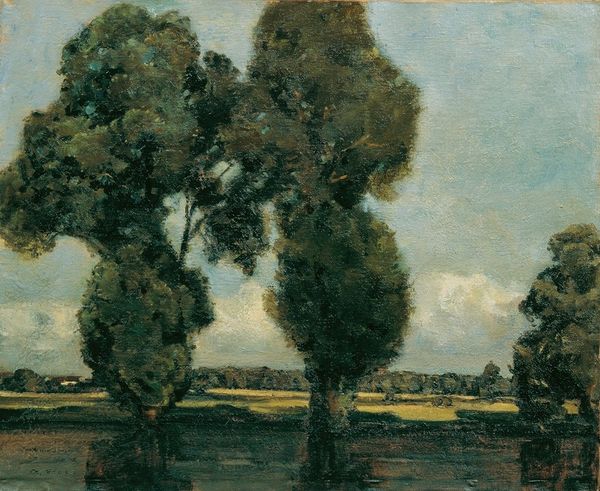
painting, plein-air, oil-paint
#
tree
#
sky
#
animal
#
painting
#
impressionism
#
plein-air
#
oil-paint
#
landscape
#
impressionist landscape
#
figuration
#
nature
#
oil painting
#
horse
#
natural-landscape
#
naturalism
#
nature
#
modernism
#
realism
Copyright: Public domain
Curator: This is Odilon Redon's "Peyrelebade Landscape," painted in 1868. Redon worked in oil paint, embracing the plein-air tradition while foreshadowing elements of modernism in this figuration piece. Editor: There’s something about this work that evokes a sense of isolated tranquility— the lone animal grazing under that bruised, cloudy sky. A stillness, maybe? It seems to be a place set apart from industry or progress. Curator: Yes, Redon returned to his native Bordeaux after art school and found creative haven at Peyrelebade, his family's vineyard. I'd be interested to know how the economic structure of the vineyard shaped his engagement with the land, what was the role of laborers? The vineyard, like many others, profited through their workers efforts. Did Redon acknowledge this or was he just interested in the romantic idea of connecting with the land? Editor: A fair point to consider when we discuss these idyllic scenes. What also intrigues me is the perspective Redon uses. While employing realism in style, he does subtly play with the space. The almost dream-like lighting emphasizes the loneliness in the depicted landscape. The presence of a sole animal underscores ideas around abandonment and even exploitation within capitalist expansion during this period. Curator: I agree the use of light in capturing atmosphere is so distinct and memorable. He departs from an exact imitation of what’s naturally visible, and so the work gestures to symbolism, and later surrealism. This, alongside the influence of Millet and Corot, offers some rich context as well for how he crafted these unique techniques that merge material representation and abstraction. Editor: It is clear the tensions embedded in this landscape allowed Redon to start exploring some rich themes he became celebrated for: not just capturing reality as-is, but tapping into something more...subconscious, maybe even politically-charged. The horse feels vulnerable, especially in juxtaposition to the dominating agricultural industry which threatened this form of rural livelihood. Curator: That’s it, precisely. We must acknowledge those contradictions at work. The way his practice moved from naturalist scenes to something more symbolist speaks volumes, particularly because it evolved directly through grappling with artistic material like painting the vineyards of Peyrelebade. Editor: Absolutely, understanding this artwork as a product of a specific historical moment, one deeply shaped by industrial changes, is central to unpacking Redon's evolving vision. He invites us into a seemingly pastoral scene, yet subtly asks questions of class, of identity and, in doing so, creates a potent piece of art history that invites many different dialogues to engage with today.
Comments
No comments
Be the first to comment and join the conversation on the ultimate creative platform.
